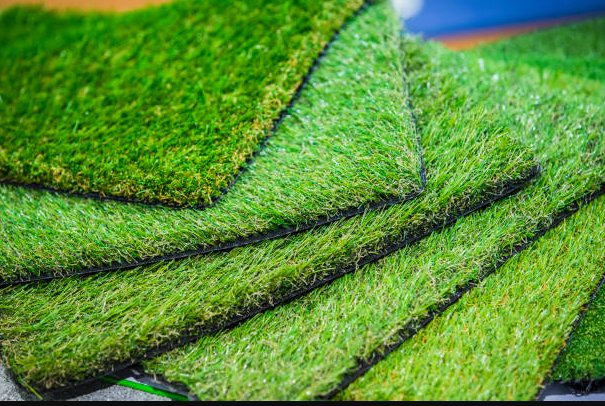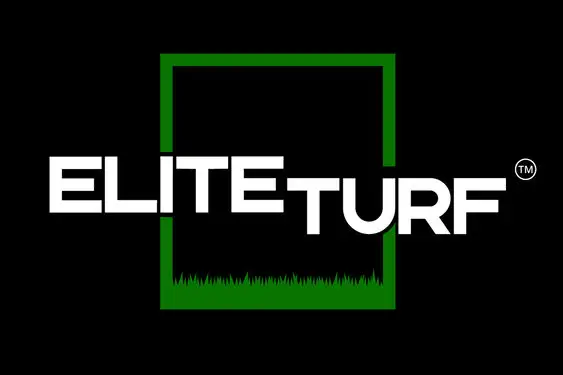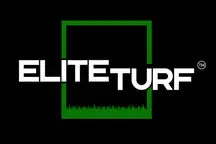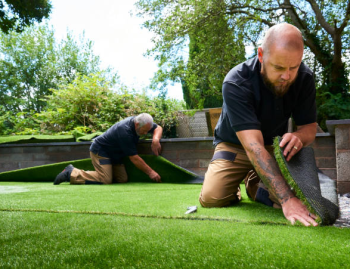
In the dry, sun-drenched climate of Phoenix, Arizona, deciding between artificial grass and real grass is more than just a landscaping choice—it’s an investment in your home’s appearance, functionality, and sustainability. Whether you’re a new homeowner, upgrading your outdoor space, or planning a commercial landscape, choosing the right type of lawn is crucial in this desert environment.
In this blog, we’ll take a deep dive into the artificial grass vs. natural grass debate, helping you decide which is the best grass for Arizona and your specific needs.
Arizona’s Unique Climate Challenges
Arizona’s desert climate presents a host of challenges for traditional lawns:
- Low annual rainfall (less than 10 inches)
- Extreme summer heat, often above 110°F
- Water restrictions and high water costs
- Soil quality that requires enhancement for grass to thrive
These conditions make it increasingly difficult to maintain a lush, green yard with natural grass—unless you’re willing to spend significant time and money on upkeep.
What Is Artificial Grass?
Artificial grass, or synthetic turf, is a man-made surface made to look and feel like natural grass. It’s constructed using durable materials like polyethylene and polypropylene, with infill added for cushioning and support.
At Elite Turf, we install industry-leading synthetic turf that mimics real grass while offering superior resilience, especially under Arizona’s intense sun.
Comparing Artificial Grass vs. Real Grass
Let’s break down the differences between the two options in the context of Arizona living:
| Feature | Artificial Grass | Natural Grass |
| Water Usage | No irrigation required (huge water savings) | High water demand, especially in summer |
| Maintenance | Low: occasional brushing and rinsing | High: mowing, watering, fertilizing, weed control |
| Lifespan | 15–20 years | 2–5 years (before major repair or reseeding is needed) |
| Initial Cost | Higher upfront cost | Lower installation cost but higher long-term expenses |
| Appearance | Consistent green all year | May brown in heat or with water restrictions |
| Eco-Impact | Saves water; may use recyclable materials | Provides some carbon capture; high water use |
| Comfort | Slightly warmer underfoot in summer | Cooler underfoot but may require pesticides and fertilizers |
| Allergy Friendly | Yes | No – can trigger grass and pollen allergies |
| Pet and Kid Friendly | Yes – non-toxic, easy to clean | Yes – but needs extra care and chemical control |
The Case for Artificial Grass in Arizona
1. Superior Water Conservation
In a state where water conservation is a critical concern, artificial grass is a clear winner. According to the Arizona Department of Water Resources, landscape irrigation accounts for 60–70% of residential water use. Switching to artificial turf can save up to 55 gallons of water per square foot annually.
That means a 1,000-square-foot lawn could save 55,000 gallons of water every year—equivalent to more than 1,800 showers.
2. Drought-Tolerant Landscaping
As drought conditions persist across the Southwest, cities like Phoenix encourage drought-tolerant landscaping, also known as xeriscaping. Artificial grass is a popular feature in these designs, offering visual appeal without resource drain.
3. Low Maintenance, High Aesthetic
Gone are the days of yellow patches, mud, and lawn mowers. Artificial turf remains lush and vibrant all year, without the hassle of fertilizing, reseeding, or pesticide use.
4. Durability for High-Traffic Areas
Artificial grass is ideal for playgrounds, pet areas, rooftops, and commercial landscapes. Our commercial turf solutions are designed to handle heavy foot traffic without matting or wear.
The Case for Real Grass in Arizona
While artificial turf has many advantages, real grass still has its place in certain Arizona landscapes.
1. Natural Cooling Effect
Grass provides a natural cooling effect—important in a state where summer heat can be overwhelming. On a hot day, real grass can be 30°F cooler than artificial turf.
2. Carbon Sequestration & Habitat
Real grass contributes to oxygen production, traps dust and pollutants, and offers a micro-habitat for insects and birds.
3. Cost of Entry
While maintenance is costly over time, the initial cost of sod or seeding is significantly lower than synthetic turf, making it appealing for budget-conscious homeowners.
Best Grass for Arizona: Natural Varieties
If you choose to go with natural grass, selecting the right drought-resistant variety is key. Here are the top choices for Arizona:
| Grass Type | Drought Tolerance | Maintenance Needs | Best Use |
| Bermuda Grass | High | Medium | Lawns, sports fields |
| Buffalo Grass | Very High | Low | Low-traffic landscapes |
| Zoysia Grass | Moderate | Medium | Shaded or sunny areas |
| St. Augustine Grass | Moderate | High | Cooler, shaded lawns |
🌿 Even the best natural grasses require regular watering and mowing—something many Phoenix homeowners are trying to avoid.
Environmental Considerations
Artificial Grass
- Pros: Water-saving, chemical-free, no emissions from mowers.
- Cons: Petroleum-based materials, retains heat, not biodegradable.
Natural Grass
- Pros: Supports biodiversity, captures carbon.
- Cons: Water-intensive, often requires fertilizers and pesticides that can harm local ecosystems.
In Arizona, environmental experts increasingly recommend artificial turf as part of a sustainable, drought-tolerant landscaping approach—especially when paired with native plants and shade trees.
Cost Comparison Over Time
Let’s consider a 1,000-square-foot yard over 10 years.
| Expense | Artificial Turf | Natural Grass |
| Installation Cost | ~$9,000 | ~$2,000 |
| Annual Maintenance | ~$150 | ~$1,200 |
| Water Cost per Year | $0 | ~$700 |
| 10-Year Total | $10,500 | $17,000 |
Despite higher initial costs, artificial turf pays for itself within 6–8 years and continues to save you money thereafter.
Elite Turf – Your Arizona Landscaping Partner
In the battle of artificial grass vs. natural grass, there’s no one-size-fits-all answer. But in a hot, arid environment like Phoenix, artificial grass often makes more sense both financially and environmentally. It’s drought-tolerant, easy to maintain, and looks stunning year-round.
Elite Turf has the expertise, credentials, and local knowledge to help you make the right choice for your home or business. As a veteran-owned, fully certified and insured company, we’ve completed thousands of projects for homeowners, schools, sports complexes, and businesses across Arizona.
From backyard oases to commercial green spaces, we do it all. Ready to make the switch? Request your free quote today and transform your landscape with the power of artificial turf.
Frequently Asked Questions
Can artificial grass handle Phoenix heat?
Yes. While it may get warmer than natural grass, modern turf materials and cooling infill reduce surface temperature significantly. Consider adding shaded areas for extra comfort.
What is the lifespan of artificial grass in Arizona?
With proper installation and occasional cleaning, it can last 15–20 years even under Arizona’s intense sun.
Will my HOA allow artificial grass?
Many Arizona HOAs now accept drought-tolerant landscaping options, including turf. We can help navigate HOA approvals during the installation process.
What if I want a custom look or feature?
Elite Turf specializes in custom turf installations—from putting greens to dog runs to rooftop gardens. Reach out for a free quote to get started.





